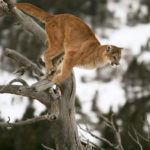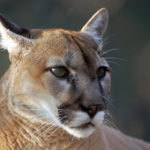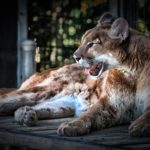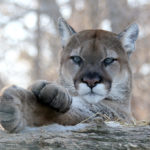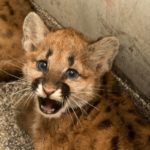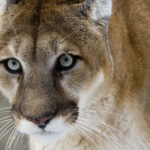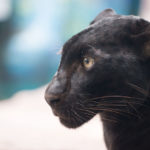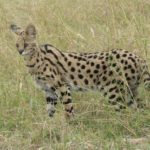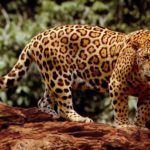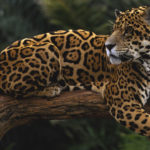Cougars
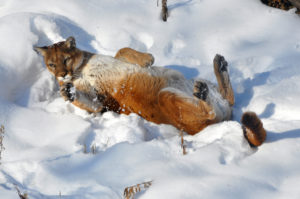 Cougar is the largest representative of the cat family in the New World. Previously, it was attributed to the same genus, to which belong ordinary cats and lynxes. But, since the cougar outwardly resembles neither one nor the other, it has been isolated in a separate genus, which includes a single species.
Cougar is the largest representative of the cat family in the New World. Previously, it was attributed to the same genus, to which belong ordinary cats and lynxes. But, since the cougar outwardly resembles neither one nor the other, it has been isolated in a separate genus, which includes a single species.
The body of the puma is longer than that of other felines, the paws are strong, the head is relatively small. It is characteristic that the puma has a very long and powerful tail, which serves as a balance for jumping.
She has thick wool, but very short. Cougar is one of the few cats that do not have a pronounced pattern. The overall tone of the coat is sandy, for which this beast is sometimes called a mountain lion, but unlike a lion, the nose of a pink puma. The animals of this species are characterized by a variety of hues of the skin: the northern populations have a light yellow and even a gray color, the southern populations are brown or bright red. On the belly, the coat has a whitish shade, and on the ears, on the contrary, it is black. The size of the animals also varies greatly: their length can range from 1 to 2 m, and weight – from 50 to 100 kg. Usually the northern pumas are larger than the southern ones.
The puma range extends from the Rocky Mountains of North America to Patagonia in the South. Throughout the range, this predator inhabits a variety of landscapes: it can be found in mountains, plain forests, tropical jungles and even swamps. Only this open beast avoided this animal. Like all cats, the cougar leads a solitary lifestyle. She is secretive and rarely gives out her presence with her voice. Pumas are very flexible and dexterous cats: they perfectly climb trees, are able to make huge jumps in length and height.
Cougars hunt on a variety of animals: from squirrels and rabbits to bakers (wild pigs) and moose. But usually they attack medium-sized animals – deer, mountain rams. Puma stealthily hunts prey, and then rushes to her from behind and breaks the cervical vertebrae (less often strangles). Characteristically, the cougar attacks animals much larger than its size. In general, cougars are not conservative and willingly try on the tooth all that moves. And only one animal is beyond her power – a skunk. Young cougars often attack (even fatal) skunks, but usually they manage to use their fetid weapons and predators quickly learn to ignore the foul-smelling “dinner”. Pumas are gluttonous and never give up uneaten prey, they return to it or hide pieces of prey in reserve.
